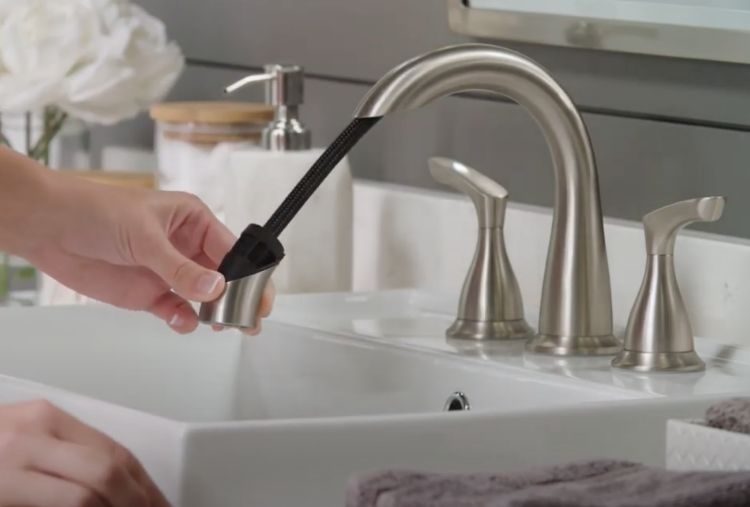Just about every person has their own individual thinking when it comes to 4 Common Reasons for a Leaky Faucet.

Trickling taps could feel like a small aggravation, yet their effect goes beyond simply the aggravation of the noise. From wasting water to incurring unneeded economic expenses and health threats, overlooking a leaking faucet can result in numerous repercussions. In this short article, we'll look into why it's vital to resolve this typical household concern immediately and efficiently.
Wastefulness of Water
Environmental Influence
Trickling faucets add substantially to water wastage. According to the Epa (EPA), a solitary faucet trickling at one drip per second can lose greater than 3,000 gallons of water per year. This not just pressures water sources but likewise impacts ecosystems and wild animals based on them.
Financial Expenses
Enhanced Water Bills
Past the environmental influence, dripping faucets can pump up water costs substantially. The built up waste in time equates right into greater energy costs, which might have been avoided with timely repair work.
Prospective Building Damages
In addition, long term dripping can cause harm to components and surfaces surrounding the tap. Water build-up can trigger staining, rust, and even architectural issues if left neglected, leading to additional repair service costs.
Wellness Concerns
Mold And Mildew and Mold Growth
The consistent presence of wetness from a leaking tap creates a suitable environment for mold and mold growth. These fungi not only jeopardize interior air top quality yet also pose health and wellness dangers, especially for people with breathing conditions or allergic reactions.
Waterborne Illness
Stationary water in trickling faucets can become a breeding ground for germs and various other virus, raising the threat of waterborne illness. Pollutants such as Legionella germs prosper in stationary water, potentially causing severe ailments when consumed or breathed in.
Do it yourself vs. Professional Repair service
Pros and Cons of Do It Yourself Fixing
While some may attempt to repair a dripping faucet themselves, DIY repair services feature their very own set of challenges. Without appropriate expertise and devices, do it yourself attempts can intensify the problem or bring about incomplete fixings, prolonging the issue.
Advantages of Hiring a Professional Plumber
Employing a specialist plumber makes certain that the underlying cause of the dripping faucet is dealt with successfully. Plumbing professionals have the expertise and devices to identify and repair faucet issues successfully, conserving time and decreasing the danger of additional damage.
Step-by-Step Overview to Taking Care Of a Dripping Faucet
Tools Needed
Before attempting to deal with a leaking faucet, collect the required devices, including a flexible wrench, screwdrivers, replacement components (such as washers or cartridges), and plumber's tape.
Typical Faucet Issues and Their Solutions
Determine the sort of faucet and the particular concern causing the drip. Typical troubles include worn-out washing machines, corroded valve seats, or malfunctioning O-rings. Describe producer directions or on-line tutorials for detailed support on repairs.
Preventive Measures
Routine Maintenance Tips
To avoid trickling taps, execute regular upkeep such as cleaning aerators, inspecting for leaks, and replacing worn-out parts without delay. Furthermore, consider setting up water-saving devices or updating to extra efficient fixtures.
Importance of Prompt Repairs
Addressing trickling taps as quickly as they're observed prevents additional water waste and potential damages, eventually saving both water and cash over time.
Impact on Home Worth
Understanding of Well-Maintained Building
Preserving a property in good condition, consisting of dealing with upkeep problems like trickling faucets, boosts its perceived worth and worth among possible buyers or occupants.
Impact on Resale Value
Qualities with properly maintained plumbing fixtures, including faucets, command greater resale worths in the real estate market. Dealing with leaking taps can add to a favorable impression during home examinations and arrangements.
Ecological Obligation
Private Contribution to Conservation
Taking obligation for repairing leaking faucets lines up with wider efforts toward water conservation and ecological sustainability. Every person's activities collectively make a significant impact on protecting precious sources.
Lasting Living Practices
By prioritizing prompt fixings and taking on water-saving practices, individuals add to sustainable living techniques that profit both present and future generations.
Verdict
Resolving a leaking tap exceeds mere comfort; it's a vital action toward saving water, reducing financial expenses, and protecting wellness and home. Whether via DIY fixings or professional help, taking action to take care of dripping faucets is a little yet impactful means to promote responsible stewardship of resources and contribute to a healthier, a lot more lasting future.
How to Fix a Leaky Faucet: Step-by-Step Repair Guide
A leaky faucet may seem like a simple annoyance, but if it's not fixed promptly, that leak could cost hundreds to potentially thousands. From water damage to mold, mildew, and high water bills, even a tiny leak can be catastrophic if left unattended. Damage like this can even affect the overall value of your home, so it's important to take the right approach for leaky faucet repair. You may need the help of a plumber in some cases, but we've got a few tips you can try on how to fix a leaky faucet before calling the pros.
Four Faucet Types
When you're learning how to fix a leaky faucet, the first step is knowing what kind of faucet you're working with! There are four common types.
Cartridge Faucets
Cartridge faucets come in one- or two-handled varieties. In one-handled cartridge faucets, hot and cold water combines in a single cartridge. In the two-handled versions, hot and cold water are controlled separately and mixed in the faucet.
Ball Faucets
Ball faucets have a single lever you push up and down to adjust the pressure and rotate to change the temperature. A slotted metal ball controls the amount of water allowed into the spout.
Compression Washer Faucets
They're the oldest type of faucet, but they're still used in many homes — especially older ones. Compression faucets have two separate handles that, when turned, raise or lower the washer that seals a water valve. This valve stops water from flowing through the faucet when it is turned off.
Disc Faucets
Disc faucets rarely need to be repaired due to their maintenance-free design. The water flow is controlled by two discs — the upper one raises and lowers against a fixed lower disc, creating a watertight seal. If your disc faucet starts leaking, you may need to replace the seals or clean residue buildup from the inlets.
Fixing a Leaky Faucet
Step 1: Turn Off the Water
Whether you're learning how to fix a leaky bathtub faucet or how to fix a leaky kitchen faucet, always turn off the water supply to your working area when you're fixing a leak. The last thing you want is a flood added to your list of things to fix.
Look for the shutoff valves below your sink or around the tub and turn them clockwise to stop the water flow. If your faucet doesn't have shutoff valves, you may need to turn off the water for the whole house. Check to make sure it's off by turning the faucet on. If nothing comes out, you're ready to start the repair.
Step 2: Take Apart the Faucet
How you disassemble your faucet depends on the type of fixture you have. You can use a flathead screwdriver to remove the caps on top of the handle or handles for cartridge and compression faucets. Inside, you should see handle screws. Unscrew these with a screwdriver to remove the handle.
Disc- and ball-style faucets will typically have an inlet screw near the handle, and removing that will reveal the interior of the faucet.
Detach the Valve Stem
For cartridge- and compression-style faucets, you'll see the inner valve stem or cartridge once you remove the faucet handles. If you have a compression faucet, unscrew the brass valve stem. If you have a cartridge faucet, pull out the cartridge. If your cartridge has been in place for a while, it may require some tools or extra force to remove it due to mineral deposits.
Examine and Replace Parts
Once you've removed the parts, check them out to confirm what needs to be replaced. You may see corroded rubber washers, O-rings, stems, or cartridges. On a ball-style faucet, check the seats and springs for damage.
If you need to repair a leaky disc faucet, check the inlet and seals on the lower disc.
Once you determine what parts must be replaced, visit your local hardware store. Bring the damaged parts with you to ensure you can purchase the correct components to replace them.
Clean Valves and Faucet Cavity
If you've removed a stem or cartridge, you may notice mineral buildup in the faucet's threads. Use white vinegar to clean the valve seat by soaking it for a few minutes, then scrub it away with a soft toothbrush and rinse with warm water. You can also clean the interior of the faucet in the same way.
Reassemble the Faucet
Once your faucet is cleaned and the required parts have been replaced, it's time to reassemble it. Put the pieces back together and slowly turn the water supply back on. Doing this slowly is crucial because too much initial water pressure can damage the new hardware you've just installed.
https://homewarranty.firstam.com/blog/how-to-fix-leaky-faucet

I ran across that piece of writing about How to Fix a Dripping or Leaky Faucet when doing a search on the web. Are you aware of another individual who is interested in the niche? Be sure promote it. We truly appreciate your readership.